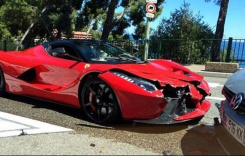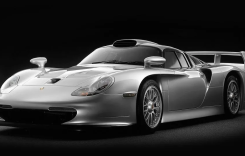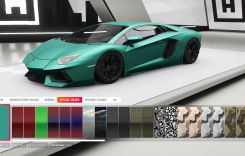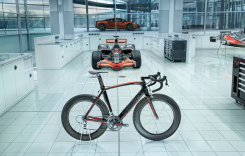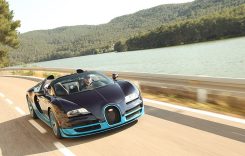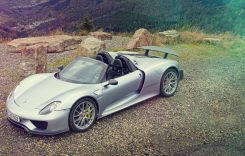
. All three of our competitors share a similar price point, separated by a margin no greater than $1300 in base trim (without luggage). Factor in accessories, however, and that gap widens by almost double, but we’ll get to that later…
After a five year absence from American Honda’s sport line-up, the Interceptor returns in the form of the 2014 VFR800F (Starting at $12,499). It continues to sport a water-cooled 782cc V-Four engine featuring a conventional chain-driven valvetrain with Big Red’s automotive-sourced Variable Valve Timing and Lift Electronic Control (VTEC). The technology helps give Interceptor riders the best of both worlds: fuel efficiency at low engine speeds and 12-second quarter-mile time-setting muscle when revved at high rpms.
Engineers sharpened the experience behind the windscreen this year with updated powertrain components as well as all-new wheels and body panels, not to mention the inclusion of valuable electronics, including traction control (Deluxe model) and a Quick Shift Gear Change Pedal (aka quickshifter, $299.95 accessory).
After finishing runner-up to the Interceptor’s big brother, the VFR1200F, in our 2011 Road Sport Shootout, Kawasaki gets another crack at the top spot with its Ninja 1000 ABS ($11,999). Like the V-Four-powered Honda, the ’14 Ninja receives a similar list of tweaks highlighted by three-way adjustable traction control, well-engineered accessory side cases and anti-lock brakes. Powered by a purpose-built 1043cc Inline Four with dual power modes (Full and Low), on paper the Ninja has what it takes to finally notch a victory, or does it?
Although it’s been inside dealership showrooms for as many years as the Interceptor’s hiatus, Aprilia’s curious Mana 850 GT ABS ($11,199) is a worthy competitor with its 90-degree V-Twin engine sporting 840cc’s of displacement, positioning it between the four cylinder contenders. It also employs clever engineering with its one-of-a-kind (for a full-size motorcycle) semi-automatic CVT transmission. This gives the rider the flexibility to shift for themselves (without using the clutch lever), or let the computer take control automatically. Other neat tricks include the location of the fuel cell beneath the rider and passenger seats, allowing for an automotive-style trunk where the conventional tank would be. But will Italian ingenuity prove as worthwhile as Japanese refinement?
We found out by saddling up on a regional tour from the Motorcycle-USA office in southern Oregon with our iPhone’s Maps app set to San Francisco, in order to take part in the ‘Where is my Ego’ demo ride program hosted by the up-start Italian e-bike builder, Energica. Joining me on this excursion were my colleagues, Editor Bart Madson and Cruiser Editor Bryan Harley. Instead of taking the interstate the entire way, we mixed it up; dodging wild fires in 100-plus degree heat through the back roads of the Shasta-Trinity National Forest and sampling the Pacific-cooled stretch of Highway 101 across Humboldt County. All told we logged over 1000 miles in two days, in varied weather conditions ranging from blazing hot to chilly ocean fog with even some rain. The result was a textbook motorcycle tour and clear understanding of where each machine ranks, so let’s dig in.



